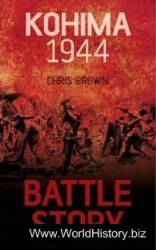Like the Roman god Janus, the U. S. Supreme Court in the early 20th century seemed to have two faces, simultaneously looking in different and often opposite directions. Looking toward the past, the Court felt compelled by precedent and belief to continue its property - and contract-protecting jurisprudence. At the same time, the Court considered a worrisome future, driven by Progressive calls for groundbreaking social legislation that was at odds with the Court’s beliefs. The Court’s task, therefore, was to chart a course that would honor its earlier constitutional principles while according the legislative and executive branches the deference and latitude they required.
No Supreme Court era exists in a vacuum. The issues in the nation affect the Court’s deliberations, and, in turn, the Court’s opinions affect not only the parties to the litigation but the course of governance and society at large. The early 20th-century Court made its decisions in a society where legislatures sought to create a more activist government that challenged earlier laissez-faire principles. The nation also faced internal dissent associated with World War I and the Russian Revolution even as justices and scholars questioned the role of law and jurisprudence in modern society.
With the rise of Progressive political philosophies, legislatures enacted laws that sought to address the excesses in
America’s economic system. In reaction to that legislation, the Supreme Court from 1900 to 1930 invalidated more legislation than it had in its previous history. At the same time, the Court often deferred to the popularly elected branches. While seemingly inconsistent, the Court’s opinions suggest that it was trying to balance core laissez-faire constitutional principles with the democratically elected branches’ drive to provide for the general welfare.
The Court struck this balance by defining the due process clauses of the Fifth and Fourteenth Amendments to protect citizens and corporations against laws the Court viewed as socialistic while granting exceptions for select social welfare needs. The cases perhaps most reflective of this balance are Lochner v. New York (1905) and Muller V. Oregon (1908). In Lochner, the Court invalidated legislation restricting bakers’ working hours, because that law improperly subjected worker and employer contract rights to “the mercy of legislative majorities” and interfered “with the rights of the individual” in violation of due process. Justice Oliver Wendell Holmes, in a dissent that resonated in the late 1930s, questioned using due process principles to prevent legislative social experiments, even when the Court considered those experiments ill-advised.
In Muller, the Court permitted exceptions to its Lochner principles in unanimously upholding an Oregon law limiting a woman’s workday to 10 hours. Basing its decision on health and safety concerns, the Court accepted Oregon’s restrictions in order to protect “women’s physical structure and the performance of maternal functions.” In later cases, the Court carved out further exceptions to its Lochner opinion, even to the point of upholding a law restricting the hours men could work in manufacturing and mining jobs in Benting v. Oregon (1917).
That deference to legislatures slowed with the demise of the Progressive movement. In 1923 the Court invalidated a congressional measure regulating wages and hours for women and children. In that case, Adkins v. Children’s Hospital (1923), the Court determined that Congress had gone too far in regulating wages and that the legislation struck at the core of an individual’s right to contract, in violation of the due process clause of the Fifth Amendment. The Court also took notice of the recently passed Nineteenth Amendment, which granted women the right to vote, suggesting that protective legislation undermined gender equality.
It is not coincidental that Adkins limited legislative prerogatives as the Progressive movement declined, just as it is not coincidence that the Court allowed regulations of contract rights in Muller and Benting at the height of the Progressive Era. In granting limited exceptions to its contract - and property-protecting rules, the Court somewhat bowed to social forces while holding firm to its core principles. When the Progressive movement’s pressures abated, the Court reverted to the purer Lochner standard. The Court followed that approach until the economic upheavals of the Great Depression (see Volume VIII).
Members of the Supreme Court often referred to property and contract rights as individual liberties against which the government could not intrude. In striking down regulatory legislation, the Court deemed itself a protector of those rights and a bulwark against the abuses of majority rule. With the advent of World War I, the Court again faced the problem of protecting individual rights against government intrusion. This time the issue would focus on First Amendment free speech rights. As part of its war efforts, Congress passed a series of laws to protect the nation in time of war, among them the Espionage Act of 1917. Charles Schenck was arrested and convicted for violating the act by distributing pamphlets opposing the draft. Schenck appealed to the Supreme Court. Speaking for a unanimous Court in Schenck v. United States, Holmes wrote that Congress could limit speech that created “a clear and present danger” of the “substantive evils that Congress has a right to prevent,” in this case obstruction of the draft. In affirming the conviction, Holmes likened Schenck’s words to “falsely shouting fire in a theatre.”
Later that year, the Court in Abrams v. United States revisited the Espionage Act and affirmed a conviction for advocating strikes against munitions factories. While the majority relied on the Schenck opinion, Holmes dissented. In that dissent, Holmes tightened his clear and present danger test to require an “imminent danger that will bring about forthwith certain substantive evils.” Later Courts would take up Holmes’s requirement of immediate danger of substantive evil.
The Supreme Court did not adopt Holmes’s imminent danger tests until well after he left the court. In 1925, however, the Court in Gitlow v. New York took a substantial step in widening First Amendment protections. In Gitlow the Court confronted the conviction under New York’s Criminal Anarchy law of Benjamin Gitlow for publishing a manifesto advocating mass strikes and proletariat revolution. While the Court acknowledged the manifesto had no effect, it upheld the conviction, fearing “a single revolutionary spark may kindle a fire that, smoldering for a time, may burst into a sweeping and destructive conflagration.” In limiting Gitlow’s speech rights, however, the Court ruled that speech was a fundamental personal right protected against state encroachment. The First Amendment now applied to state laws as well as federal laws.
Shortly after Gitlow the Court faced another state law case. In Whitney v. California, the Court considered Anita Whitney’s conviction under California’s criminal syndicalism statute for membership in the Communist Party. The Supreme Court affirmed her conviction, but in his concurrence, Justice Louis Brandeis, offered a new standard and logic that would be adopted about 50 years later. Brandeis wrote that democratic governance required nearly unfettered speech and that if there was time to answer the speech, with no threat of immediate danger, then the speech was protected by the First Amendment. Between them, Holmes and Brandeis set the standard for speech protection that later Courts would adopt.
While the Court ruled on these important issues, judges and scholars were reassessing how the courts and the law interrelated with society. In 1897, Holmes published The Path of the Law, introducing the idea that law and judicial decision making could neither be divorced from societal needs nor could they be viewed apart from the values of the judges. Holmes rejected the notion that judges formal-istically applied set rules to facts, as mathematicians would apply numbers to a formula. Instead, public policy did and should play a significant role in judicial decision making. Courts increasingly accepted Holmes’s position as they progressively applied laws in a more flexible and pragmatic fashion.
Scholars often view the 1900-30 Supreme Court as archaic. More realistically, the Court should be viewed a body struggling with government’s place in an increasingly complex nation. In addressing the balance between personal freedoms and general needs, the early 20th-century Supreme Court set the foundation for many of the liberties Americans now enjoy.
See also Buck’s Stove; civil liberties; Danbury Hatters; progressivism.
Further reading: Morton J. Horwitz, The Transformation of American Law, 1870-1960: The Crisis of Legal Orthodoxy (New York: Oxford University Press 1992); Robert G. McCloskey, The American Supreme Court, 4th ed., (Chicago: University of Chicago Press, 2005).
—Robert Olender




 World History
World History









